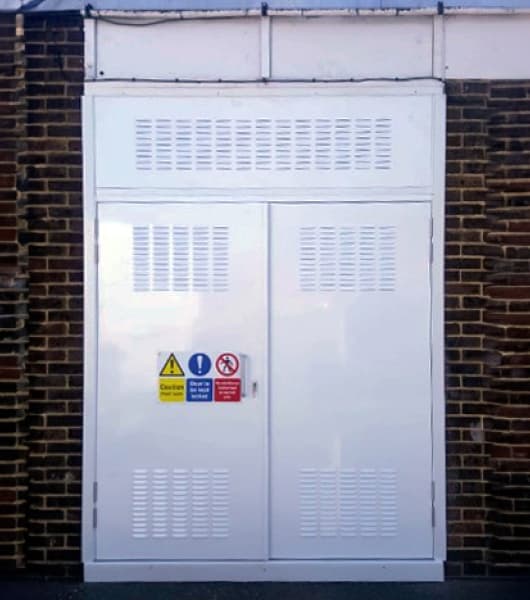Boiler rooms are critical areas in residential, commercial, and industrial buildings. They house essential equipment that provides heating, hot water, or power for entire properties. Because these spaces contain high-pressure systems, flammable materials, and heavy machinery, maintaining strict safety standards is vital. A key element of this safety is the boiler room door. Choosing and maintaining the right door can help prevent accidents, contain hazards, and ensure compliance with building regulations.
The Importance of a Boiler Room Door
A boiler room door serves more than just a basic entry function. It acts as a protective barrier that enhances fire safety, controls noise, and restricts access to authorized personnel. Properly designed and installed doors provide an extra layer of defense against the potential risks associated with boiler rooms.
Protecting Against Fire Hazards
Boiler rooms generate significant heat and often contain equipment that operates under high pressure. In the event of a malfunction or fire, a fire-rated boiler room door is essential to contain flames and smoke. This slows the spread of fire, giving occupants more time to evacuate and allowing emergency services to respond effectively.
Restricting Unauthorized Access
A boiler room door also prevents unauthorized individuals from entering a potentially dangerous area. Accidental entry can lead to serious injuries or equipment damage. Secure locking mechanisms and clearly marked signage help keep these critical spaces safe.
Key Features of a Safe Boiler Room Door
To provide maximum protection, a boiler room door should include specific safety features designed to withstand extreme conditions.
Fire-Rated Construction
Fire-rated doors are a necessity for boiler rooms. These doors are tested to withstand fire for a specific period, usually ranging from 30 to 120 minutes, depending on local building codes. The fire rating ensures that flames and smoke are contained, reducing the risk of damage to the rest of the property.
Heat and Smoke Seals
High-quality boiler room doors are equipped with intumescent seals that expand when exposed to heat. These seals close gaps around the door frame, preventing smoke and hot gases from escaping during a fire.
Durable Materials
Strong materials such as steel or reinforced metal are commonly used for boiler room doors. These materials offer superior resistance to heat, impact, and corrosion, ensuring long-lasting performance in demanding environments.
Ventilation Options
While safety is critical, proper ventilation is equally important. Boiler rooms require adequate airflow to maintain safe operating temperatures and prevent the build-up of harmful gases. Many boiler room doors are designed with louvered panels or ventilated sections to allow continuous air circulation without compromising security.
Compliance with Building Regulations
Installing the correct boiler room door is not just a matter of safety but also a legal requirement. Building codes and fire safety regulations specify the type of doors that must be used in mechanical and utility spaces. Non-compliance can lead to fines, legal liability, or insurance issues. Always consult local regulations and work with professional installers to ensure that the door meets all necessary standards.
Maintenance and Inspection
Even the best boiler room door requires regular maintenance to function properly.
Routine Inspections
Check the door regularly for signs of wear, rust, or damage. Ensure that seals are intact, hinges are secure, and locking mechanisms operate smoothly.
Fire Door Testing
Fire-rated boiler room doors should be tested according to local fire safety guidelines. Regular testing ensures that the door will perform as expected in an emergency.
Cleaning and Lubrication
Keep the door and its components clean to prevent dirt or debris from interfering with its operation. Apply lubricant to hinges and locks to ensure smooth movement and a secure fit.
Choosing the Right Boiler Room Door
When selecting a boiler room door, consider the specific needs of the property and the equipment inside. Factors such as fire rating, material strength, ventilation requirements, and locking systems should guide the decision. Steel doors are often preferred for their durability and ability to withstand extreme conditions.
Professional Installation Matters
A high-quality door is only effective if it is properly installed. Professional installation ensures that the door is correctly aligned, tightly sealed, and compliant with fire safety regulations. Certified installers can also recommend the best hardware and locking mechanisms for added security.
Additional Safety Tips for Boiler Rooms
Beyond the door itself, maintaining boiler room safety requires a comprehensive approach.
- Clear Signage: Install warning signs to alert individuals of restricted access and potential hazards.
- Proper Lighting: Ensure the area is well-lit to reduce accidents and improve visibility in emergencies.
- Emergency Exits: Verify that exits and pathways remain clear at all times.
- Regular Servicing: Schedule professional maintenance for boilers and related equipment to prevent leaks, fires, and mechanical failures.
The Role of Boiler Room Doors in Noise Reduction
Boiler rooms often produce loud operational sounds. A well-constructed boiler room door can help reduce noise transmission to surrounding areas. This is especially beneficial in residential buildings, offices, and hospitals where maintaining a quiet environment is important.
Conclusion
A strong and well-maintained boiler room door is a vital component of any building’s safety strategy. It protects against fire, restricts unauthorized access, reduces noise, and ensures compliance with local regulations. Property owners and facility managers should prioritize high-quality materials, fire-rated construction, and professional installation to create a secure and reliable barrier. For those seeking expertly designed and durable boiler room door solutions, Security Doors Direct offers trusted products and professional guidance to meet a variety of safety and performance requirements.





Comments